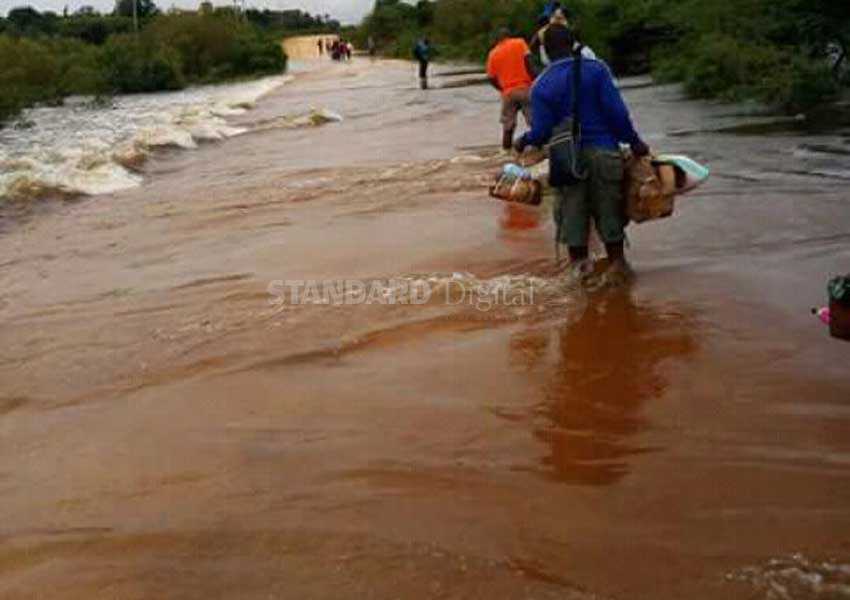
With flash floods catching motorists unawares in parts of Narok County, driving in the area has practically become a nightmare.
The Kenya Meteorological Department says the long rains that have been pounding the country have now surpassed the highest mark recorded in the 1950s in Narok and Makueni counties.
So far, Narok station has recorded 611.3mm compared to the 610.8mm recorded in 1957.
Makindu station has recorded 596.8mm against the 510.7mm recorded in 1968.
The highest March, April and May (MAM) 2018 seasonal total recorded up to May 10 is 971.5mm at Embu station that is 169 per cent of its Long-Term Mean (LTM) of 575.3mm.
Data collected from Narok and Makindu is higher than what was recorded during the 1997 El-Niño where Mombasa Airport station had 221.5mm and 233.3mm on October 17 and 18 respectively while Mtwapa station recorded 255mm on October 18.
The ongoing rains are expected to continue in Narok, Kajiado, Baringo, Kericho, Bomet, Nyamira, Kisii, Uasin Gishu, Kakamega, Bungoma, Kisumu, Migori and Laikipia, with flooding expected in low-lying and poorly drained areas.
There is a possibility of showers tomorrow in North Eastern, Makueni, Machakos, Kitui and Taita Taveta.
According to data obtained from the Kenya Meteorological Department, the highest daily rainfall recorded during the first 10 days of May 2018 was at Mombasa Airport, amounting to 98.7mm (on May 3). Lamu station recorded 88.3 and 79.9mm on May 1 and 8 respectively.
In April, Marsabit station recorded 151.8mm on April 13 while Garissa and Moi Airbase (Eastleigh) stations recorded 125.3mm and 103.5mm on April 16 and 23, respectively.
In March, Siakago rainfall station in Embu County recorded 182.6mm while Mrangi Primary School station in Taita Taveta County recorded 138.0mm. Other rainfall storms recorded during the month of March include 97.8mm at Iten rainfall station on March 14, 94.9mm at Busia Ministry of Water rainfall stations on March 14, 91.2mm at Kitui Meteorological Station on March 25, 86.5mm at Alupe Kalro stations (in western Kenya) on March 18 and 86.1mm at Makindu Meteorological station on March 1.
Tana River area, being downstream, is prone to flooding due to waters gathered up-stream, Aberdares and Murang’a included.

